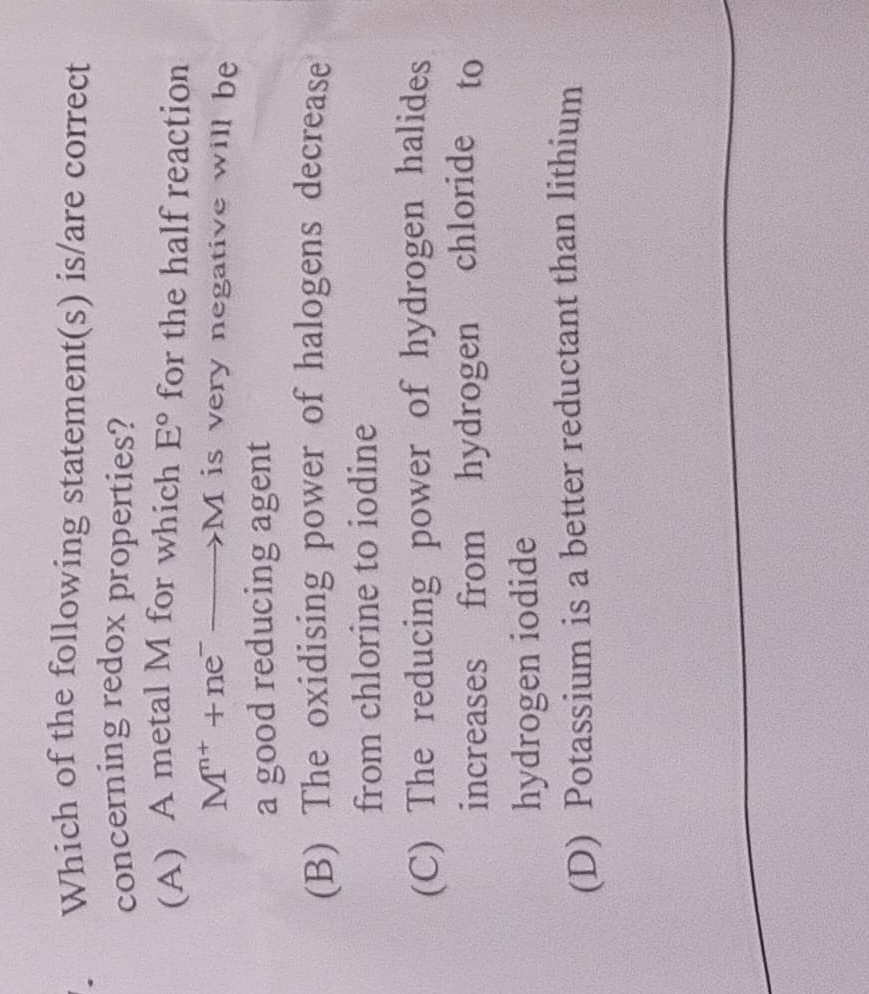Question
Question: Which of the following statement(s) is/are correct concerning redox properties?...
Which of the following statement(s) is/are correct concerning redox properties?

A metal M for which E° for the half reaction Mn+ + ne^{-}$$\longrightarrowM is very negative will be a good reducing agent
The oxidising power of halogens decrease from chlorine to iodine
The reducing power of hydrogen halides increases from hydrogen chloride to hydrogen iodide
Potassium is a better reductant than lithium
A, B, C
Solution
Statement (A): A very negative E° for Mn+ + ne^{-}$$\longrightarrowM implies that M has a strong tendency to get oxidized (M ⟶ Mn+ + ne−). A substance that readily gets oxidized is a good reducing agent. Thus, (A) is correct.
Statement (B): Oxidising power of halogens is related to their tendency to gain electrons. This tendency decreases down the group (F2>Cl2>Br2>I2) due to decreasing electronegativity and increasing atomic size. Therefore, oxidising power decreases from chlorine to iodine. Thus, (B) is correct.
Statement (C): Reducing power of hydrogen halides (HX) depends on the ease of oxidation of the halide ion (X−). As atomic size increases down the group (Cl<Br<I), the electron cloud of the halide ion becomes more diffuse, making it easier to lose electrons. Thus, the reducing power increases in the order HCl < HBr < HI. Thus, (C) is correct.
Statement (D): The standard reduction potential for Li+/Li is -3.05 V, while for K+/K it is -2.92 V. A more negative E° indicates a stronger reducing agent. Lithium is the strongest reducing agent among alkali metals in aqueous solution due to its exceptionally high hydration enthalpy. Therefore, lithium is a better reductant than potassium. Thus, (D) is incorrect.
